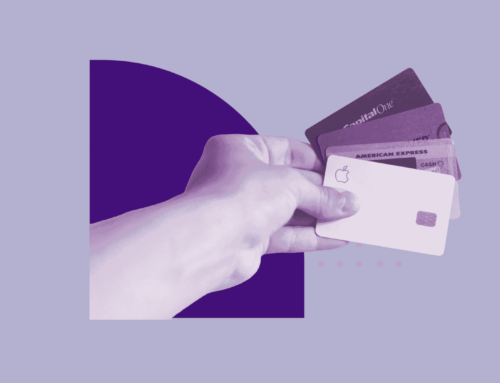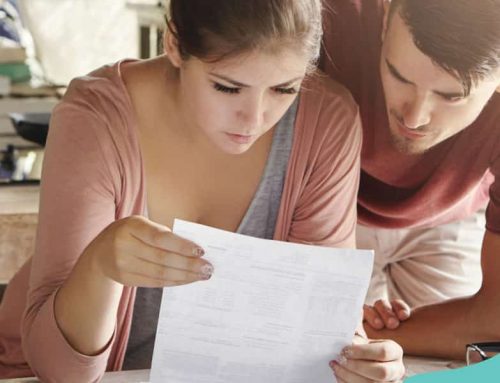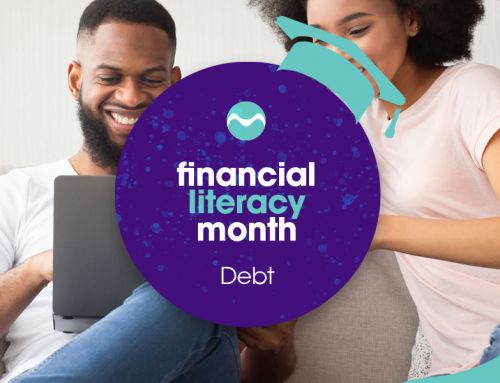Are you struggling to pay off your debt? Are you feeling overwhelmed and hopeless? You are not alone. Millions of people are in the same situation.
But don’t despair! There is hope.
In this blog post, we will discuss 7 essential steps to get out of debt and save money. These steps are simple, but they require consistency and dedication to make them work.
But trust us, if you follow these steps, you will be on your way to becoming debt-free in no time!
Step One – Understand what you owe
When it comes to what to do to get out of debt, the first step is to fully understand how much you owe. This may seem like a no-brainer, but you would be surprised how many people do not know how much they owe in total.
Get a piece of paper and write down all your debts, including the name of the creditor, the interest rate, the minimum monthly payment, and the balance. This will give you a clear picture of what you are up against.
If you’re struggling to access the required details, reach out to your creditors, they are required by law to provide you with this information.
The best way to budget and get out of debt is to categorize your expenses. Once you have a clear idea of what you owe, you can start to make a plan to pay it off.
Step Two – Make an honest budget
The second step is to make a budget spreadsheet. You need to find out where your money is going every month so that you can allocate more towards debt payoff. We recently conducted a survey and discovered that 52% of respondents do not currently have a budget. If you’ve found your past budgeting technique hasn’t worked in the past, we recommend diving deep into the 50/30/20 rule. Not sure where to start? Here’s a guide for Budgeting 101: How to Budget Your Money.
Track your spending for at least one month to get an accurate idea of where your money goes. When making your budget, be sure to include all your regular expenses, like rent/mortgage, car payment, insurance, groceries, utilities, etc.
You should also include some fun money for things like entertainment and eating out. It’s important to have a little bit of fun money so that you don’t feel like you are depriving yourself and end up blowing your budget.
There are many ways to create a budget, but the most important part is to be honest with yourself about your spending habits. Once you know where your money is going, you can make changes to ensure that more of it goes towards paying off your debt.
Once you have your budget, you can start allocating more money toward your debt payoff to help you get out of debt fast.
Step Three – Create a financial plan
Once you have all your regular expenses accounted for, you can start to focus on your debt.
The best way to get out of debt fast is to pay down those debts that are accruing interest the fastest.
This means you will want to focus on paying off your high-interest debt first, like credit cards and personal loans. By doing this, you will save yourself money in the long run because you will be paying less in interest.
You can do this by making minimum payments on all your debts except the one with the highest interest rate.
Once you have paid off your high-interest debt, you can move on to your other debts, like student loans and car loans, and pay them off one by one.
Step four – Try the debt snowball method
Once you’ve paid off those debts with the highest interest rate, it’s time to switch tactics and focus on paying off your debts with the smallest balances first.
This is known as the debt snowball and is where you focus on paying off your smallest debts first and then work your way up to your larger debts. By doing this, you will be able to see your progress and feel motivated to keep going.
Paying off your smaller debts first can give you a “psychological boost” that will motivate you to keep going until all your debt is gone.
And once you’ve paid off all your debt, you can start saving and investing for your future.
Step Five – Use a balance transfer credit card
If you have a good credit score, you can apply for a balance transfer credit card. This will allow you to transfer your debt to a new card with a 0% interest rate for a certain period.
A switch to a 0% interest rate can give you the breathing room you need to pay off your debt without accruing any more interest.
Just be sure to read the fine print on balance transfer cards before you apply, as some of them have fees that can offset the benefits of the 0% interest rate.
Just make sure that you pay off the debt before the intro period ends, or you will be stuck with high-interest rates again.
Step Six – Get help from a nonprofit organization
If you are still struggling to make your payments, there are nonprofit organizations that can help. These organizations will work with your creditors to lower your interest rates and monthly payments.
The benefit to reaching out to a non-profit is that they will also offer financial counselling to help you get out of debt and stay out of debt.
Being in debt can be a hugely stressful experience and having a little extra support can go a long way.
A financial advisor can help you create a budget and come up with a plan to pay off your debt.
They can also offer advice on how to make more money and save money so that you can get out of debt and stay out of debt.
The important thing to remember is that there are support mechanisms out there for people in debt.
You are not alone and there is help available.
If you are struggling with debt, reach out for help today.
There is no shame in admitting that you need help and there is no shame in asking for help.
The sooner you ask for help, the sooner you can start working on a plan to get out of debt and stay out of debt.
There are many options available to those who want to get out of debt and stay out of debt. You can find support from family and friends, financial advisors, non-profit organizations, or even the government.
The most important thing is to act and create a plan that works best for your unique situation.
Step Seven – Start Saving
Once you’ve reduced your debt, it’s time to start saving. Begin by creating a budget and sticking to it. Determine how much you can realistically save each month and make sure to put that money into savings.
Automating your savings can help make the process easier and less painful. You should also consider setting up an emergency fund so that you have money set aside for unexpected expenses.
Saving money may not be the most exciting thing in the world, but it’s an important part of financial security.
But how much should you save each month?
The answer to this question depends on several factors, like your age, income, and expenses.
A good rule of thumb is to save at least 15% of your income each month.
So, if you make $50,000 per year, you should be saving at least $750 per month.
If you can’t swing 15%, start with what you can and increase your savings each month as you get more comfortable.
You can also use the tools you developed to pay off your debts to help you save. Your budgeting skills and debt repayment plan can be applied to your savings goals.
You can also turn the debt snowball into the savings snowball by setting yourself incremental savings targets and then reaping the same psychological benefits for hitting them.
Marble is here to help you become debt-free
Marble is the perfect sidekick to help you on your journey to financial fitness. We’ll provide you with the resources and support you need to get out of debt and save money.
If you’re not sure where to start, all you need to do is take our financial persona quiz and we’ll create a personalized action plan for you.
We know how important a sense of support is when it comes to debt problems and, with Marble, you’ll have access to a community of other savers who can offer advice, support, and motivation.
We know that getting out of debt and saving money can be tough, but with Marble by your side, you can do it!
Start your journey to financial fitness today.






